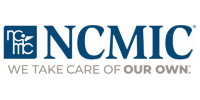The Institute of Alternative Futures wants YOUR input. Ordinarily, an organization like the Institute for Alternative Futures draws on the views of knowledgeable “experts” handpicked or recommended to the Institute from a variety of sources in an effort to divine trends and various scenarios into the future. In the case of chiropractic, this has the unfortunate side effect of leaving out the mass “experts” who are slugging it out everyday practicing chiropractic and eking out a living in the ever-evolving health care marketplace. Recognizing this, the Institute is providing YOU with the opportunity to CHIME IN and SOUND OFF on what YOU think the future holds for chiropractic. The IAF link (below) allows you to express your “expert” views on the future of chiropractic. Before you render your expert opinion, however, the NYSCA suggests that: • you provide yourself sufficient time to be thoughtful and contemplative; • don’t vent just after you had a trying day or nasty argument with the latest machinations of a claims adjuster or clinical peer reviewer of some insurer/HMO/network or utilization review agent; • try to be calm, collected and relaxed; • close your office door and put on some soothing back ground music; • grab a cup of jo, tea or a bottle of your favorite spring water; • sit down, close your eyes and take a deep breath, • read portions of the full IAF report – The Future of Chiropractic Revisited: 2005-2015 – before venturing an answer (downloadable through the NYSCA Website); at the very minimum read through the IAF Executive Summary (found in the IAF report and excerpted below), so you can make informed decisions and educated choices about where YOU see the future of chiropractic going. Enrich the profession by sharing your insights, your experience and your “expert” opinion with the rest of the profession. Your expert opinion will be added to the opinions solicited from attendees at the Association of Chiropractic Colleges/Research Agenda Conference this past March in Law Vegas, Nevada. Results can be monitored directly by logging on to the IAF website link (included elsewhere before). By sharing your expert opinion, YOU stand a good chance of influencing the future direction of chiropractic. Be an EXPERT. Do it Now! The link to the IAF report: The Future of Chiropractic Revisited: 2005-2015 – can be found at: Future of Chiropractic Revisited The link to the IAF survey page is: Expert Survey The link to the survey tool is: Survey tool The results of this expert canvass tabulated thus far can be accessed at: Results thus far The results are filterable, that is, they can be filtered to show only the results of a select population of “experts.” IAF Highlights In 1998 the Institute for Alternative Futures (IAF) was commissioned by the National Chiropractic Mutual Insurance Company (NCMIC) to conduct a study and issue a report on the future of chiropractic care in the United States. That report received a lot of attention from various reviewers and readers in the health care system. Last year, the IAF was asked to revisit their analysis and forecasts focusing on issues and trends in the chiropractic field that have taken place since the publication of their 1998 findings. In January 2005, the Institute issued its updated report (featured below on the NYSCA Web homepage. The report may also be downloaded from the Institute for Alternative Futures website at The Future of Chiropractic Revisited As anyone knows, “[t]he future is uncertain and remains so” acknowledges the IAF, nonetheless, the Institute seeks to provide boundaries to the uncertainty that exists “in order to provide alternative views of how the future might unfold.” The Institute examined chiropractic’s strengths, its many weaknesses, the opportunities available in the health care system and the threats arrayed against chiropractic to draw four conclusions on a possible chiropractic future – some bright, others bleak. The four scenarios were as follows: Scenario 1—Slow, Steady Growth. Chiropractic continues its slow, steady growth in the numbers of chiropractors. The evidence for manipulation for back pain and neck pain is positive and cost competitive with other approaches. Wellness care for geriatric patients is also proven to improve health and mobility. Chiropractic is somewhat better integrated into the medical community though rotations during college, and because of successful integration into large delivery systems. The Department of Veterans Affairs (VA) and the Department of Defense (DoD) make chiropractic a popular covered option. Other health care delivery systems include chiropractic care as an elective option. Each year leading to 2015, chiropractic college graduates have more opportunities to practice with other types of healthcare providers than the previous class. Doctors of physical therapy (DPTs), massage therapists, and osteopathic physicians are all competitors. This competition has slowed the growth of fees and reduced the average number of visits to chiropractors. Wellness or maintenance visits are less common in most chiropractic practices, as neither the evidence nor managed care plans support them for most patients. The exception is geriatric chiropractic, where the research shows that regular chiropractic care including nutrition and exercise help keep patients healthy and mobile. Scenario 2—Downward Spiral The cost squeeze in healthcare pushes many chiropractors to the brink. Consumer demand falls and managed care removes even more chiropractic coverage from their plans. Standards of care fall, insurance fraud is common, and many chiropractors turn to unethical behavior to sustain their practices. Simultaneously, serious malpractice cases involving missed and ignored diagnosis of serious illnesses by super straight chiropractors become major media stories. By 2015, the evidence base for chiropractic effectiveness advances little over the limited indications where chiropractors had been proven effective in 2005. Other providers offer spinal manipulation for lower back, neck, and chronic pain. DPTs and massage therapists take over a large percentage of the cash market for back pain. The remaining chiropractors fight over the declining number of “true believer” patients who have had positive previous experiences with chiropractic and can afford to pay out-of-pocket. Scenario 3—Evidence Based Collaboration Manipulation is found to be both efficacious and cost effective for a variety of NMS conditions including back and neck pain, headache and some types of chronic pain. Chiropractors expand their education and training to include more NMS conditions and they push for limited prescription rights. This allows them to fill a broader role as NMS specialists. Clinical experience for chiropractors in integrated settings becomes a standard part of chiropractic education and recertification. This, combined with new authoritative studies showing the benefits of chiropractic for NMS conditions, increases the rates of referrals from medical doctors to chiropractors. Consumer-directed healthcare grows dramatically. Patients who manage their own care favor those chiropractors who score well on “report cards” which compare health care providers in their area. By 2015, the few large managed care plans that remain require patients to undergo a course of manipulation for back or neck pain before considering authorization of expensive surgery or medicines. Chiropractors have very sophisticated office information systems which include electronic patient records, the ability to link genomic information, and “patient coaching” with different chiropractic techniques. Scenario 4—Healthy Life Doctors A mindshift takes place in the US, particularly among individuals and health care systems. Chronic diseases can be forecast years in advance, and lifestyle approaches are often the most effective way to prevent disease or to reverse it in its early stages. A “healthy life” is viewed as powerful medicine and many types of providers, such as chiropractors, medical doctors, naturopathic doctors, and doctors of physical therapy, commit to build practices as “healthy life doctors”. There is increasing evidence that spinal manipulation is effective for many types of neuromuscular problems. But lifestyle or wellness approaches are effective for many of the same conditions, as well as for most viscerosomatic conditions. Many chiropractors argue that they have always included a lifestyle component in their practice -- yet only a small fraction actually did so. As the mindshift takes place in the larger society, thousands of DCs shift their practices to become “healthy life doctors”. By 2015, advances in prospective medicine allow accurate predictions of very specific risk factors for disease. Health information systems forecast health conditions by analyzing a person’s genes and sophisticated biomonitoring on all patients. Healthy life doctors specialize in providing targeted health management plans for their patients to avoid the onset of disease. Consumer-directed health plans give individuals significant choice and proactive consumers who are willing to pay for wellness/preventative care drive changes in the healthcare system. Managed care follows when it becomes apparent that preventing disease is more cost effective than treating it. INSIGHTS & RECOMMENDATIONS Chiropractic is a series of enigmas. • It is the largest and most well established complementary and alternative medicine (CAM) in the United States, but in practice many chiropractors are barely holistic or integrative. • Chiropractic is still well positioned to take advantage of newfound interest in complementary and alternative care by providing more integrative care themselves, developing better interdisciplinary teams, and doing more consistent referrals. But since we made that recommendation in 1998 DCs have done relatively little to make this integration more real. • Patient satisfaction with chiropractic care is generally high. But it is not clear if this is from spinal manipulation or the broader aspects of chiropractic care as it is delivered, including the personal attention of the chiropractor. • The acceptance of chiropractic in the Department of Veterans Affairs (VA) and Department of Defense (DoD) represent major advances. Yet wide parts of the health care provider establishment are still neutral or hostile to chiropractors and major insurers are further cutting coverage. IAF identified a number of opportunities for chiropractic profession. The inclusion of chiropractors in the VA and DoD will generate more demand and it will create better relations between conventional medical providers and chiropractors. Consumer driven healthcare with Health Savings Accounts will give consumers more choice. However, chiropractic still faces significant challenges. Healthcare cost controls, especially in managed care plans, will continue. Although patient satisfaction with chiropractic is high, the broader public has an indifferent or negative attitude to chiropractic. The efforts of chiropractors to integrate with the medical community have been hampered by the lack of internal unity in the chiropractic field. Also, the evidence for spinal manipulation is promising, but is far from conclusive. Chiropractors will face more competition, especially from the growing numbers of physical therapists who are pursuing direct patient access in all 50 states and are upgrading their educational programs to graduate Doctors of Physical Therapy. IAF’s recommendations for the most important activities the chiropractic field should pursue include: 1. Accelerate Research,: Chiropractic needs more research demonstrating the efficacy and cost-effectiveness of chiropractic for NMS conditions. Beyond NMS conditions, research on the efficacy and cost-effectiveness of chiropractic care on somatovisceral conditions is needed. The chiropractic community should aggressively promote data collection by chiropractors in their practices. The data could then be used for well-designed scientific studies. 2. Continue to Strive for High Standards of Practice: In the years ahead empowered consumers and managed care plans will demand better information on their health care providers. They will look for healthcare providers who generate good outcomes for their patients, and provide good value. The chiropractic profession should define and ensure the use of high standards of practice. 3. Develop Greater Integration with Mainstream Healthcare: Greater integration with mainstream healthcare will create many opportunities for the profession. DCs in practice need to enhance their ability to network with doctors and other health care providers, and make appropriate referrals to them. The clinical experience of chiropractic students should be improved and graduating students should have some clinical experience in settings with healthcare providers other than chiropractors. 4. Anticipate and Engage Consumer Directed Care: Consumer Directed Healthcare will be an important force shaping the future of healthcare. Chiropractic’s high patient satisfaction rates are important, but not sufficient for becoming the treatment of choice for patients. Chiropractic will also have to improve outcome measures and communicate the benefits of chiropractic care to the public through the media and consumer advocacy groups. 5. Create Greater Unity within the Profession: Creating greater unity within the profession remains a major challenge. Since we made this recommendation in 1998 there have been significant efforts towards unity, although with mixed success, and they should continue. One way to enhance unity is a shared chiropractic vision of health, health care and chiropractic. Part of this effort was made in 2000. It should be continued. 6. Enhance Individual DC’s Contribution to Public Health: Public and community health objectives are often not addressed by individual chiropractors (just as they are usually not addressed by MDs and other treatment focused health care providers). We recommend that each DC understand what contribution they can make to public/community health and do this. We recognize that many already are doing this, but most chiropractors do not. 7. Prepare for the Future of Prevention & Wellness: Scenario 4 forecasts a “healthy life doctor”. No aspect of health care has invented the business model for prevention and wellness. Chiropractors argue that they are closer to prevention and wellness than MDs and other providers. Some, but only some, chiropractors do practice prevention. But the chiropractic field will need to be inventive in defining the economics of success in this realm. 8. Develop Geriatric Chiropractic: One of the largest growth areas in healthcare will be geriatrics. The retiring Baby Boomers will look for alternative medicine that can help them to remain active and healthy. Developing better evidence for geriatric chiropractic and more in-depth postgraduate programs in geriatric chiropractic will help chiropractic expand. There is much overlap between prevention and wellness approaches for the general population and what elders need. The NYSCA and the IAF thank you for participating in this forum and poll regarding the IAF Future of Chiropractic. The link to the IAF survey page is: Expert Survey The link to the survey tool is: Survey Tool . The results of this expert canvass tabulated thus far can be accessed at: Results thus far The results are filterable, that is, they can be filtered to show only the results of a select population of “experts.” The IAF is also going to allow the survey instrument to be used a part of a school or class project. By using a unique group name on question 4 of the instrument, the responses can be filtered to highlight the inclinations of persons located in the same vicinity, within a particular school or class, or with a particular instructor. IAF is providing you with an opportunity that should not be missed. Enter YOUR expert opinion today. Sincerely, Craig Bettles Futurist Institute for Alternative Futures
- Home
- About
- Find a Doctor
- Membership
- Education
- News
- Newsletter
- Conventions & Symposiums
- Webinars
- Positive Press (F4CP) ↪
- Insurance and Medicare ⚿
- New Practitioners ⚿
- Center for Excellence ⚿
- Informative Links
- Mandated Reporter Training↪
- Leadership
- Officers and Regional Directors
- Districts
- District Officers ⚿
- District Map
- District 1 (Manhattan)
- District 2 (Brooklyn)
- District 3 (Queens)
- District 4 (Bronx)
- District 5 (Staten Island)
- District 6 (Nassau)
- District 7 (Suffolk)
- District 8 (Westchester)
- District 9 (Mid-Hudson)
- District 10 (Capital Region)
- District 11 (Mohawk Valley)
- District 12 (Central NY)
- District 13 (Binghamton Area)
- District 14 (Rockland County)
- District 15 (Finger Lakes)
- District 16 (Southern Tier)
- District 17 (Western NY)
- Committees
- Bylaws ⚿
- Code of Ethics ⚿
- Elections ⚿
- Advocacy
- Sponsors
- Classifieds




